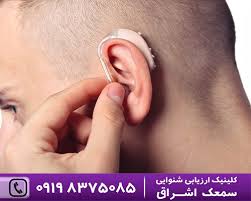Hearing aids have come a long way since their inception, evolving from simple ear trumpets to sophisticated digital devices that can dramatically improve the quality of life for those with hearing loss. This article explores the history, types, technology, and benefits of خرید سمعک shedding light on why they are essential for millions of people worldwide.
A Brief History of Hearing Aids
The journey of hearing aids began in the 17th century with ear trumpets, simple devices that amplified sound by funneling it into the ear. The late 19th and early 20th centuries saw the advent of carbon hearing aids, which used carbon microphones to improve sound transmission. The development of vacuum tube technology in the 1920s allowed for more portable devices, albeit still bulky by today’s standards. The real breakthrough came with the invention of the transistor in the 1950s, which enabled the creation of smaller, more efficient hearing aids.
Types of Hearing Aids
Today, hearing aids come in various styles, each designed to meet different needs and preferences:
- Behind-the-Ear (BTE): These hearing aids rest behind the ear and are connected to an earpiece inside the ear canal. They are suitable for all types of hearing loss and are known for their durability and ease of use.
- In-the-Ear (ITE): Custom-made to fit the outer ear, ITE hearing aids are less visible than BTE models and are effective for mild to severe hearing loss.
- In-the-Canal (ITC) and Completely-in-the-Canal (CIC): These are smaller, more discreet options that fit partly or completely inside the ear canal. They are typically used for mild to moderate hearing loss.
- Receiver-in-Canal (RIC): Similar to BTE, RIC hearing aids have a receiver or speaker that sits inside the ear canal, connected by a thin wire. They offer a more natural sound experience and are suitable for mild to severe hearing loss.
- Bone Conduction Hearing Aids: For individuals with conductive hearing loss, bone conduction hearing aids bypass the outer and middle ear, transmitting sound vibrations directly to the inner ear.
Advancements in Hearing Aid Technology
Modern hearing aids are marvels of technology, incorporating numerous features that significantly enhance their functionality and user experience:
- Digital Signal Processing (DSP): Digital hearing aids convert sound into digital signals, allowing for advanced processing and customization. This technology provides clearer sound quality and better noise reduction.
- Wireless Connectivity: Many hearing aids now come with Bluetooth connectivity, enabling users to connect to smartphones, televisions, and other devices for direct audio streaming.
- Directional Microphones: These microphones help focus on sounds coming from specific directions, improving speech understanding in noisy environments.
- Rechargeable Batteries: The introduction of rechargeable hearing aids has eliminated the need for frequent battery changes, offering more convenience and sustainability.
- Telecoil (T-Coil) Technology: T-Coils allow hearing aids to connect to loop systems found in public places like theaters and churches, enhancing the listening experience in these environments.
- Artificial Intelligence (AI): Some advanced hearing aids now use AI to automatically adjust settings based on the user’s environment and listening habits, providing a more personalized experience.
Benefits of Hearing Aids
The benefits of hearing aids extend beyond improved hearing. They play a crucial role in enhancing overall well-being:
- Improved Communication: Hearing aids help individuals engage in conversations more effectively, reducing misunderstandings and enhancing relationships.
- Increased Safety: Being able to hear alarms, sirens, and other warning sounds is vital for personal safety, and hearing aids ensure these sounds are not missed.
- Cognitive Health: Studies have shown that untreated hearing loss is linked to cognitive decline. Using hearing aids can help maintain mental sharpness and reduce the risk of dementia.
- Enhanced Quality of Life: Better hearing leads to increased participation in social activities, reducing feelings of isolation and depression.
- Workplace Efficiency: For those in the workforce, hearing aids can improve job performance by ensuring better communication and interaction with colleagues and clients.
Conclusion
Hearing aids are not just devices that amplify sound; they are powerful tools that significantly enhance the quality of life for those with hearing loss. With continuous advancements in technology, hearing aids are becoming more effective, discreet, and user-friendly. For anyone experiencing hearing difficulties, consulting with a hearing specialist and exploring the options available can open up a world of sound and improve overall well-being.


